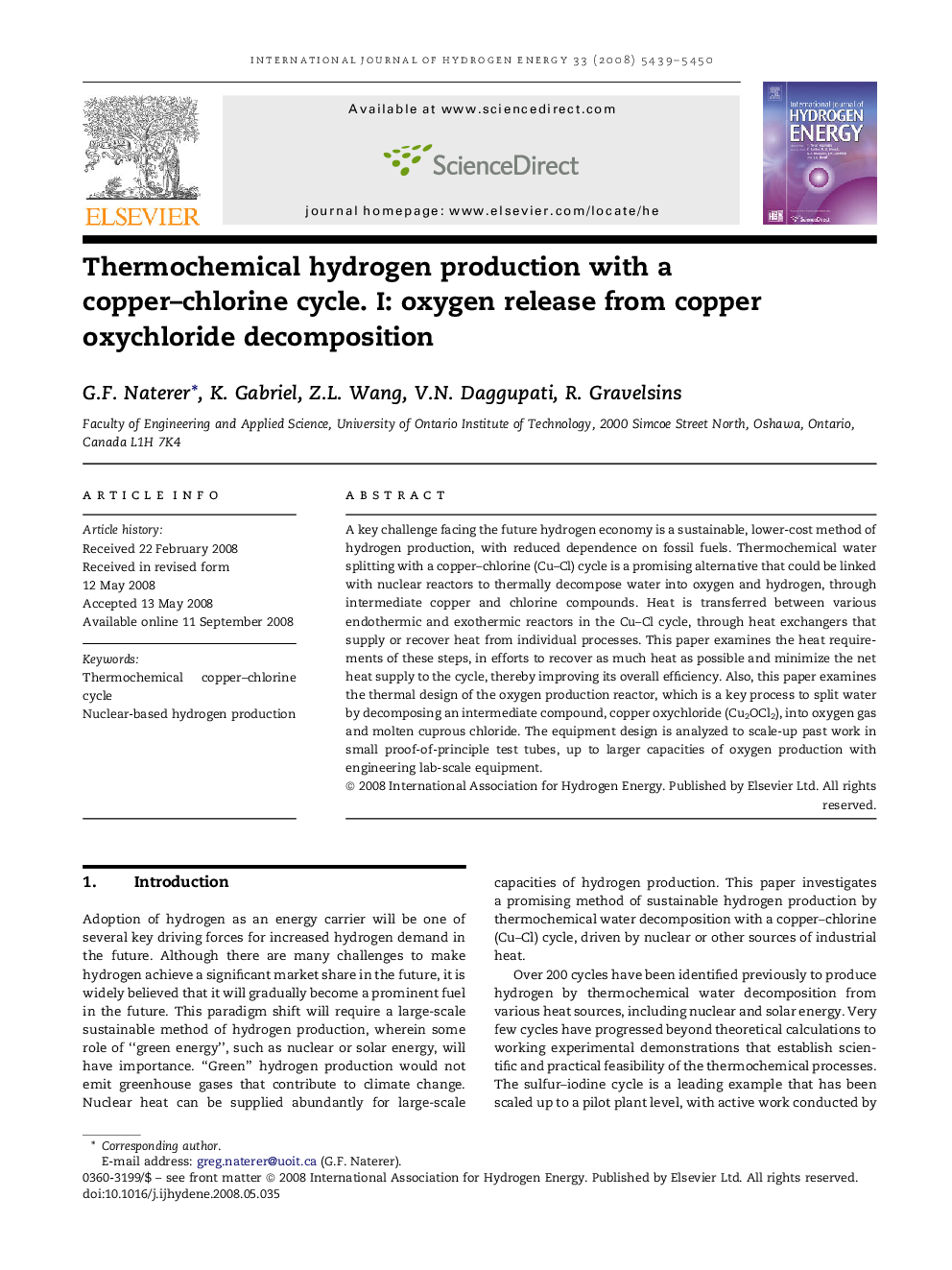| Article ID | Journal | Published Year | Pages | File Type |
|---|---|---|---|---|
| 1278479 | International Journal of Hydrogen Energy | 2008 | 12 Pages |
A key challenge facing the future hydrogen economy is a sustainable, lower-cost method of hydrogen production, with reduced dependence on fossil fuels. Thermochemical water splitting with a copper–chlorine (Cu–Cl) cycle is a promising alternative that could be linked with nuclear reactors to thermally decompose water into oxygen and hydrogen, through intermediate copper and chlorine compounds. Heat is transferred between various endothermic and exothermic reactors in the Cu–Cl cycle, through heat exchangers that supply or recover heat from individual processes. This paper examines the heat requirements of these steps, in efforts to recover as much heat as possible and minimize the net heat supply to the cycle, thereby improving its overall efficiency. Also, this paper examines the thermal design of the oxygen production reactor, which is a key process to split water by decomposing an intermediate compound, copper oxychloride (Cu2OCl2), into oxygen gas and molten cuprous chloride. The equipment design is analyzed to scale-up past work in small proof-of-principle test tubes, up to larger capacities of oxygen production with engineering lab-scale equipment.
